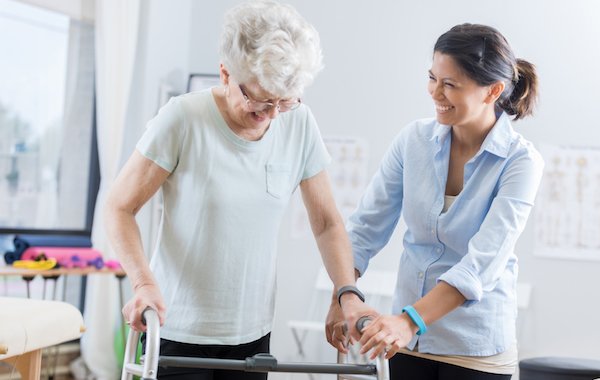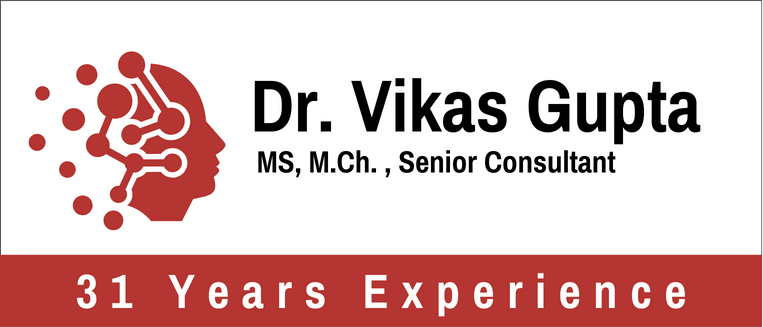
A stroke is a medical emergency that can leave a person facing sudden physical, emotional, and cognitive challenges. While most people associate stroke recovery with rehabilitation centres or outpatient therapy weeks later, the journey to healing often begins much sooner, right in the Intensive Care Unit (ICU).
As soon as the patient is medically stable, early rehabilitation efforts are initiated to support recovery. These can include gentle movements, safe positioning, breathing exercises, and even early attempts at communication or mobility.
In this blog, we will explore how stroke rehabilitation begins in the ICU, the importance of acting early, and how these first critical steps can dramatically improve outcomes for stroke survivors.
Why Early Stroke Rehabilitation Matters?
After a stroke, recovery should begin as soon as the patient is medically stable, ideally within 24 to 48 hours. Early rehabilitation plays a crucial role in improving outcomes by leveraging the brain’s natural ability to heal and rewire itself, a phenomenon known as neuroplasticity. This healing process is most active in the first few days after a stroke.
Starting rehab in the ICU helps:
- Prevent complications like stiffness, blood clots, and pneumonia
- Stimulate the brain’s natural healing
- Support early regaining of mobility and function
Dr. Vikas Gupta shared, “The brain’s recovery potential is highest in the first few days after a stroke. Starting rehab early, often within 24 to 48 hours, can make all the difference in helping patients regain function faster and avoid long-term complications.”
ICU: The First Stage of Stroke Recovery
Many people assume that stroke recovery begins only after moving to a rehabilitation centre, but in reality, the first steps often start right in the ICU.
The ICU isn’t just for critical care; it also plays a key role in early stroke rehabilitation. Once the patient is stable, a team of specialists, including physical, occupational, and speech therapists, begins gentle activities like repositioning, assisted movements, or sitting up in bed.
These small but essential actions help prevent complications and support brain recovery. Starting simple rehabilitation activities, such as assisting a patient to sit up or move a limb, right in the ICU, can go a long way in preventing complications.
What Happens During Stroke Rehab in the ICU?
Rehab in the ICU begins with a comprehensive evaluation and continues with simple, targeted activities:
1. Initial Evaluation
Once a stroke patient is stable in the ICU, a multidisciplinary assessment is performed. This includes:
- Neurological examination
- Swallowing assessment (to prevent aspiration)
- Motor and sensory testing
- Cognitive and language evaluations
- Mental health screening
This evaluation helps in setting personalised rehabilitation goals and determining the appropriate therapy plan.
2. Passive Range of Motion (PROM)
If the patient is unconscious or unable to move, passive range-of-motion exercises are initiated. A therapist or nurse performs these movements to keep joints flexible and muscles from atrophying.
3. Repositioning and Proper Body Alignment
Proper body alignment and regular repositioning reduce the risk of bedsores, pneumonia, and contractures. Therapists also begin head and trunk positioning to support better respiratory function and alertness.
4. Early Mobilisation
If the patient is alert and medically stable, sitting up in bed or a chair can begin within 24–48 hours. This simple act improves blood circulation, reduces the risk of deep vein thrombosis, and supports alertness and breathing.
Physical Therapy in the ICU: Laying the Foundation for Recovery
Physical therapy in the ICU plays a vital role in beginning recovery shortly after a stroke. Even while under close medical observation, patients can benefit from carefully tailored therapy sessions that do more than just prevent stiffness; they support functional recovery from the very first day.
Here are the key approaches used:
- Assisted Active Movement: Therapists help patients in moving their limbs using available strength, promoting brain-body reconnection and encouraging voluntary movement.
- Bedside Transfers: Moving patients from bed to chair enhances circulation, posture, and balance, which are essential for later mobility.
- Gait Training (If Safe): With supports such as walkers or parallel bars, patients may begin standing or taking a few steps, thereby improving strength and reducing the risk of DVT.
- Functional Electrical Stimulation (FES): Low-level electrical currents activate weak muscles, preserving tone and aiding early motor control.
- Positioning and Posture Support: Proper alignment prevents sores and supports comfort and lung function.
Each session is brief, personalised, and monitored, laying the groundwork for long-term recovery.
Dr. Vikas Gupta emphasises, “Even simple movements like sitting up or lifting a hand can spark powerful changes in the brain. ICU-based therapy is not about pushing limits, it’s about preserving hope, one small step at a time.”
Stroke Recovery Timeline: ICU to Independence
Understanding what happens at each phase helps set realistic expectations:
| Phase | Timeline | Focus Areas |
| ICU Phase | Day 1–7 | Stabilise vitals, start therapy, and prevent complications |
| Step-Down/Neurology Ward | Week 1–2 | Increase mobility, introduce speech & occupational therapy |
| Inpatient Rehab | Week 2–4+ | Intensive 3+ hours/day therapy, ADLs training, discharge planning |
| Home or Outpatient Rehab | 1 month onward | Community reintegration, functional improvement, and ongoing therapy |
Benefits of Early Rehabilitation After Stroke
Numerous studies highlight the benefits of early rehabilitation after stroke, especially when initiated in the ICU. These include:
- Faster functional recovery: Patients who start rehab early often regain independence more quickly.
- Reduced hospital stay: Early mobilisation and therapy can shorten the length of hospitalisation.
- Lower risk of complications: Rehab reduces the likelihood of pneumonia, blood clots, and pressure ulcers.
- Improved long-term outcomes: The first few days following a stroke are critical for neuroplasticity. Capitalising on this window enhances the brain’s rewiring process.
- Enhanced morale: Early rehabilitation fosters a sense of hope and involvement in recovery, helping patients mentally and emotionally.
Early rehab sets the stage for faster recovery and a more substantial, more hopeful return to daily life.
A patient shared, “I had a sudden weakness on my left side and was rushed to the hospital. Dr. Vikas Gupta diagnosed my stroke within minutes and started treatment immediately. I was terrified, but he began the therapy while I was in the ICU. With his guidance and the rehab team’s care, I was able to start sitting up and moving my arm within two days. I’m now back home and walking with support.”
Another patient shared, “When I suffered a stroke, I thought recovery would take months, even to begin. However, under Dr. Vikas Gupta’s care, rehabilitation began immediately in the ICU. He explained everything clearly to my family and made sure I had daily therapy sessions from the start. Today, I’ve regained most of my speech and can walk on my own.”
Strategies to Improve Stroke Patient Outcomes
Improving outcomes involves more than therapy; it requires a holistic, patient-centred approach. Here’s how:
1. Family Engagement
Involving family members early helps in:
- Understanding patient needs
- Encouraging participation in therapy
- Providing emotional support
- Individualised Goals
Each stroke is unique. Customised rehabilitation goals—based on the patient’s impairments, age, and pre-stroke functioning—lead to more focused and achievable results.
3. Continuity of Care
Smooth transitions between ICU, inpatient rehab, and home care are vital. Miscommunication during these shifts can result in setbacks. Coordinated care ensures rehab isn’t disrupted.
4. Mental Health Support
Stroke survivors often face depression and anxiety. Integrating psychological counselling or psychiatric support early can prevent emotional barriers to recovery.
Dr. Vikas Gupta adds, “Rehabilitation must begin where the stroke begins—in the ICU. The sooner we act, the better we shape the patient’s future.”
Final Thoughts
The ICU is not just a place for critical care; it’s where recovery truly begins for stroke survivors. With growing awareness about the benefits of early rehabilitation after stroke, hospitals are increasingly embracing therapy that starts from Day 1.
By addressing both the physical and psychological needs of the patient early on, stroke rehabilitation in the ICU lays a strong foundation for recovery and reintegration into daily life.
FAQs
1. Is every stroke patient eligible for early rehabilitation in the ICU?
Early rehab depends on the patient’s medical stability. If vital signs, brain swelling, or other complications pose a risk, therapy may be delayed until the patient is stable and able to undergo treatment.
2. Does stroke rehabilitation in the ICU hurt the patient or exhaust them?
No. ICU therapy sessions are short, gentle, and closely monitored. Therapists work within the patient’s limits to avoid overexertion and ensure safety.
3. Are families involved in ICU stroke rehabilitation?
Yes. Families are often educated early on how to assist with positioning, communication, or supporting motivation. Their emotional support plays a key role in the patient’s recovery.
4. Is speech therapy started in the ICU as well?
If the patient has difficulty speaking or swallowing, a speech-language pathologist may initiate assessments and therapy in the ICU itself, particularly to prevent aspiration and provide support for communication.
5. How do doctors determine when to start rehab in the ICU?
Rehabilitation usually begins once the patient is medically stable, responsive, and free from immediate life-threatening conditions. Vital signs, level of consciousness, and overall readiness guide the decision.
Explore more blogs: Stroke in Young Adults: Causes, Symptoms & Prevention
